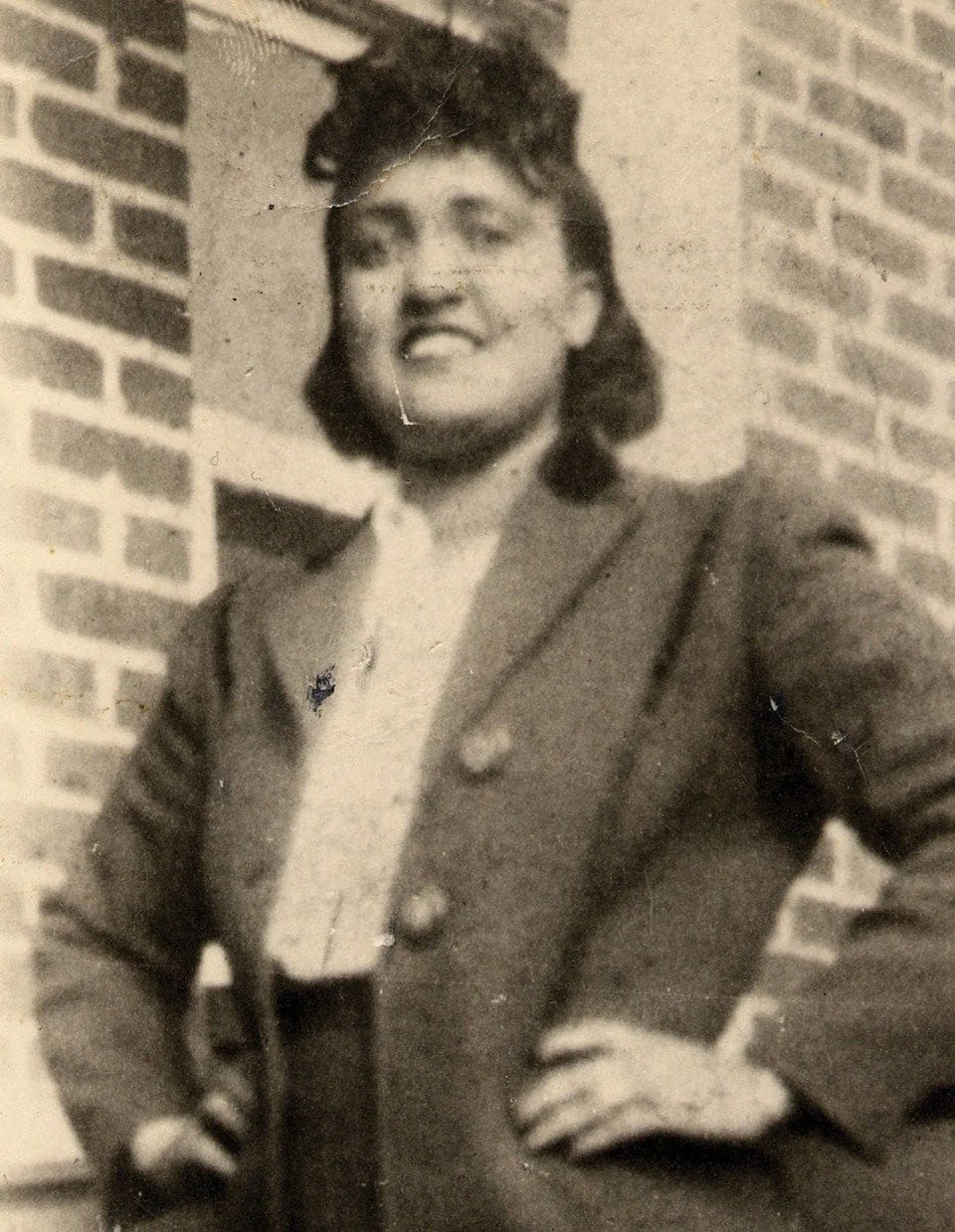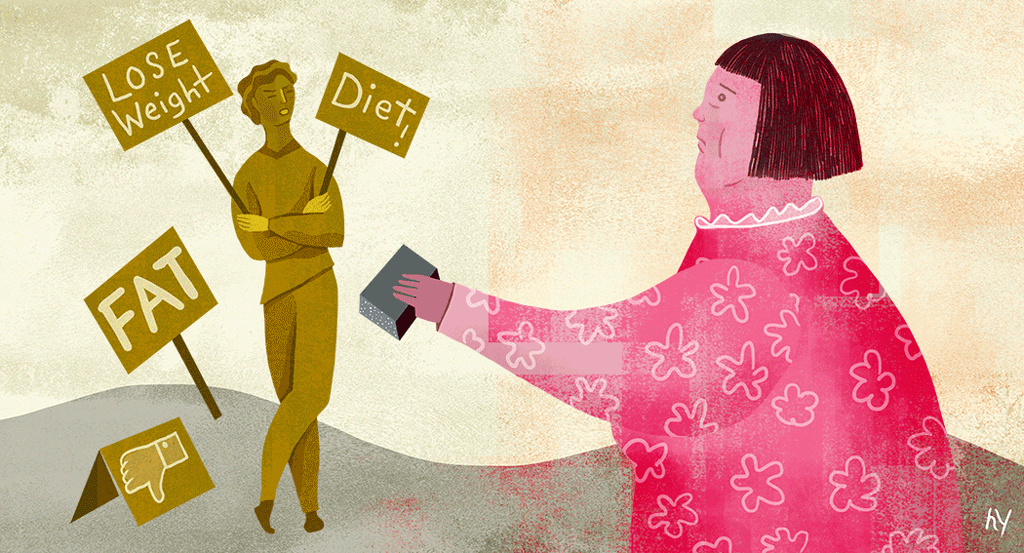Awash in Pink, but Breast Cancer Awareness Isn’t a Cure
Henrietta Lacks in a 1940s photo. (Lacks family/Henrietta Lacks Foundation/AP)
Note from the Editor-in-Chief
It’s World Cancer Day and Black History Month. As the author and researcher Dr. Parthasarathy highlights in her article, black women have higher rates of mortality when it comes to breast cancer. In 2014, 20.55 out of every 100,000 American female breast cancer patients died. Black women were much more likely to die than white women. While breast cancer is slightly less prevalent in Black women, it is much more likely to be diagnosed at a later stage in them.
As two other of our contributing researchers have noted, this is an issue beyond medicine. “In the U.S., about 23.1 percent of black women live in poverty, compared to 9.6 percent of white women. Studies have shown that a lack of resources makes a huge difference in survival rates, treatment responses, and progression of disease. Poor women are less likely to have access to good quality health insurance, to get as much information on early detection and screening, and to have access to the best health care and latest treatments.”
Awareness in Breast or other Cancer should therefore not be the focus—we are all aware of the all-pervasive presence of cancer. What must happen is a recognition of the overarching racist systemic structures that invade the most basic of human rights, from socioeconomic stability to healthcare, and create disease—physical and otherwise—for Blacks. As Ta-Nehisi Coates powerfully explained in his The Case for Reparations, these rates of Cancer are caused by the cancerous systems of “Two hundred fifty years of slavery. Ninety years of Jim Crow. Sixty years of separate but equal. Thirty-five years of racist housing policy” that continue today. That history lives in the body, and it kills like it killed Henrietta Lacks. A case for reparations is a public health issue.
And it’s not simply a matter in the U.S., although it’s most rampant and systemic here—anti-black and colorist rhetoric is pervasive globally as slavery and colonialism was global. My Afro-Turk grandmother passed away in Turkey when I was a child from Ovarian Cancer due to such charged mistreatments.
So, in recognition of World Cancer Day today and Black History Month a well as continuing on, focus on the individuals who don’t benefit from such “raising of awareness.” Support a Black person in the thread created by Black queer cancer survivour & educator Ericka Hart here—and follow their account for further education—or Black people seeking direct funding for their cancer treatment, such as Noel Leomie, a black and queer endometrial cancer survivor; Keisha Knowles, a black womxn who has never smoke but is battling lung cancer; and the organisational efforts of Black Mamas Matter or Foundation for Black Women’s Wellness. Also, commit yourself to anti-racism by learning from and supporting Black womxn, such as (in addition to Hart) Rachel Ricketts, ShiShi Rose, Walela (a non-binary Leukemia warrior), Rachel Cargle’s Black Women & Girls Therapy Fund, and Layla F. Saad.
Three decades after October was established as Breast Cancer Awareness Month and on World Cancer Day, we need to ask ourselves: has all our pink paraphernalia really helped improve health?
At best, the results are mixed. Studies show these campaigns can put a particular disease on the map, which can be valuable for rare illnesses. The summer of 2014’s Ice Bucket Challenge for amyotrophic lateral sclerosis is a perfect example. It raised the disease’s profile and the ALS Association generated US$100 million in donations in a month. But dumping a bucket of ice over your head doesn’t teach you anything about the disease or how it affects those who suffer from it. Those who donated money had little sense of how their efforts might improve the health and lives of ALS patients, and a year on, the disease and its sufferers have been largely forgotten.
The longer history of breast cancer awareness efforts gives us a deeper understanding of the benefits and limits of these kinds of campaigns. Without a doubt, the past three decades have generated an enormous increase in public awareness of breast cancer. There have been thousands of consciousness-raising events across the world, and hundreds of targeted initiatives among government agencies, major corporations and nonprofit organizations, to the point that it’s not strange to see even NFL players decked out in pink during October.
Breast cancer research funding has grown considerably. In 1990 the US federal government spent less than $100 million on the disease. Now the government and top private foundations spend at least $1 billionannually. And there has been a massive increase in mammography screening.
But across the world, breast cancer rates have gone up right along with awareness. In the United States, a woman’s lifetime risk of breast cancer has gone from one in 20 in the 1960s to one in eight today. While part of this shift can be explained by increased access to mammography, researchers also point to long-term use of hormone therapies and lifestyle changes. This year in the US, nearly a quarter of a millionwomen will be diagnosed with invasive breast cancer. Mammography does not seem to reduce breast cancer mortality.
And while survival rates have improved for white women, women of color have not seen the same gains: today, black women are 40% more likely to die of breast cancer than their white counterparts. Even women of color who are diagnosed early have more aggressive cancers. Low-income women also have difficulty accessing the expensive treatments that are improving survival rates for middle- and high-income women.
Also problematic is the fact that the breast cancer awareness movement’s enormous success has actually led women to overestimate their risk of getting the disease while underestimating their risks of contracting more common – but at least as deadly – conditions, including heart disease.
So while awareness efforts can focus significant public attention and help scientists raise funds for research, the impact on eradicating the disease itself is much less clear.
Does that mean we should abandon such efforts? Absolutely not. But in the fight against a particular disease, we need to understand that awareness efforts are only initial steps down a very long road. The time has come for us to think about other steps we need to take.
We can begin by putting at least as much time and effort into understanding the social, health, economic, environmental and policy-related challenges faced by individuals at risk for and suffering from a particular disease. Then we should help them fight these battles. Imagine “national days of action” in which we work within communities to improve access to the local health infrastructure. Or we could direct fundraising to organizations that serve patients’ practical and emotional needs. In the case of breast cancer, these organizations provide help in getting to the grocery store, interacting with medical professionals and communicating the patient’s wishes, and providing home care.
If we continue to focus on increasing research funding, then we need to ask questions not only about the percentage of money actually spent on research as opposed to overhead, but also how to ensure that this research will benefit those suffering from the disease. Scholars have suggested, for example, that decisions about allocating research fundingbe tied to the potential for improved health outcomes and the researchers’ track records in achieving them. At the moment, funding is doled out based primarily on scientific priorities that may or may not align with health and social priorities.
Others have argued that in order to ensure that findings turn into widely available new technologies rather than expensive innovations available only to a few, research efforts must be truly interdisciplinary. So a breast cancer team could include not only biologists but also social scientists, public health and policy experts, and even patients. They would work together throughout the research process to produce outputs that are acceptable, useful and affordable to the populations most in need.
And we need to pressure research funding organizations and other policymakers to ensure that intellectual property agreements do not hinder access to important treatments, preventive or diagnostic measures. Until 2013, for example, genetic testing on genes linked to breast and ovarian cancer was extremely expensive in the United States due to a patent-based monopoly held by biotechnology company Myriad Genetics. But public interest lawyers, civil society groups, and other citizens fought against the patent, and now the technology is cheaper and more widely available. The competition that has emerged may produce more research and better testing too.
If we continue to focus our advocacy on disease awareness efforts, then we will only make limited progress toward our real goals. We must think strategically about generating the same kind of public engagement in all the other steps down the long road toward better health and cures.
About the Author
Shobita Parthasarathy is an Associate Professor of Public Policy and Women's Studies, University of Michigan. Her research focuses on the comparative politics of emerging science and technology, particularly genetics and biotechnology. Her first book, Building Genetic Medicine: Breast Cancer, Technology, and the Comparative Politics of Health Care (MIT Press, 2007). Its findings influenced the 2013 US Supreme Court case focused on the patentability of human genes. She is a faculty affiliate of UM's Science, Technology, and Society Program.



